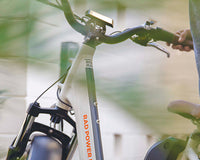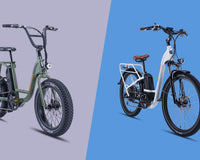Maintaining the health of your electric bike’s battery is one of the easiest ways to ensure that you can enjoy your daily ride for years to come.
We’ve shared a lot of day-to-day tips for prolonging the lifespan of your battery, but when the seasons change and the temperatures drop, it's important to make sure you're showing it the right amount of TLC.
If you’re one of the many riders out there planning on taking advantage of our electric bikes’ year-round capabilities, here are a few quick things you should keep in mind as we pedal our way into the colder months:

Don't get too cold!
There’s nothing more invigorating than a brisk morning ride, especially when you have an electric fat tire bike that can help you conquer ice and snow. Still, when the temperature drops to sub-zero, it’s a good idea to stay out of saddle. In order to keep your battery operating normally, avoid riding your bike in temperatures lower than -4 °F /-20 °C.

Take your battery inside.
We always advise storing your bike in a dry location above freezing temperatures, but if that's not possible, then take your battery inside. Charge and store your battery indoors and between 50 °F - 77 °F /10 °C - 25 °C. Failure to do so may void your warranty, render your battery non-functional, or cause a hazardous situation.
Prepare your battery for longterm storage.
If you're putting your battery away for more than two weeks, keep it at around 75% charged and check on it every month to make sure it's staying at that level. Keeping it fully charged while in storage can lead to range loss. A day or two is not a cause for concern, but after a while, it’ll start to add up.
And finally, don't drench your battery!
This should go without saying, but you should never immerse or submerge either your battery or your bike in water or other liquid. This can damage your electrical system or cause a hazardous situation. The bike's components are all water-resistant, but you should still avoid large puddles, streams, or very heavy rain. After riding your ebike in wet conditions, inspect your bike to make sure all components are clear of dirt, debris, and moisture.
For full battery guidelines consult your owner's manual and our help center.






